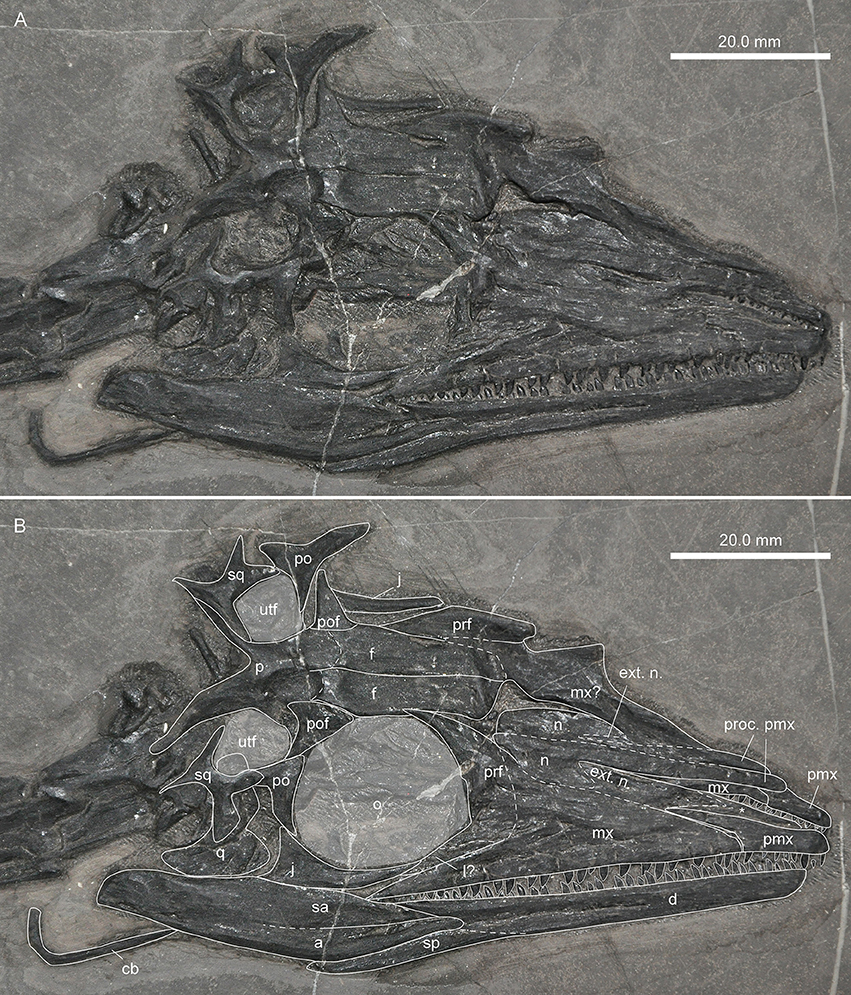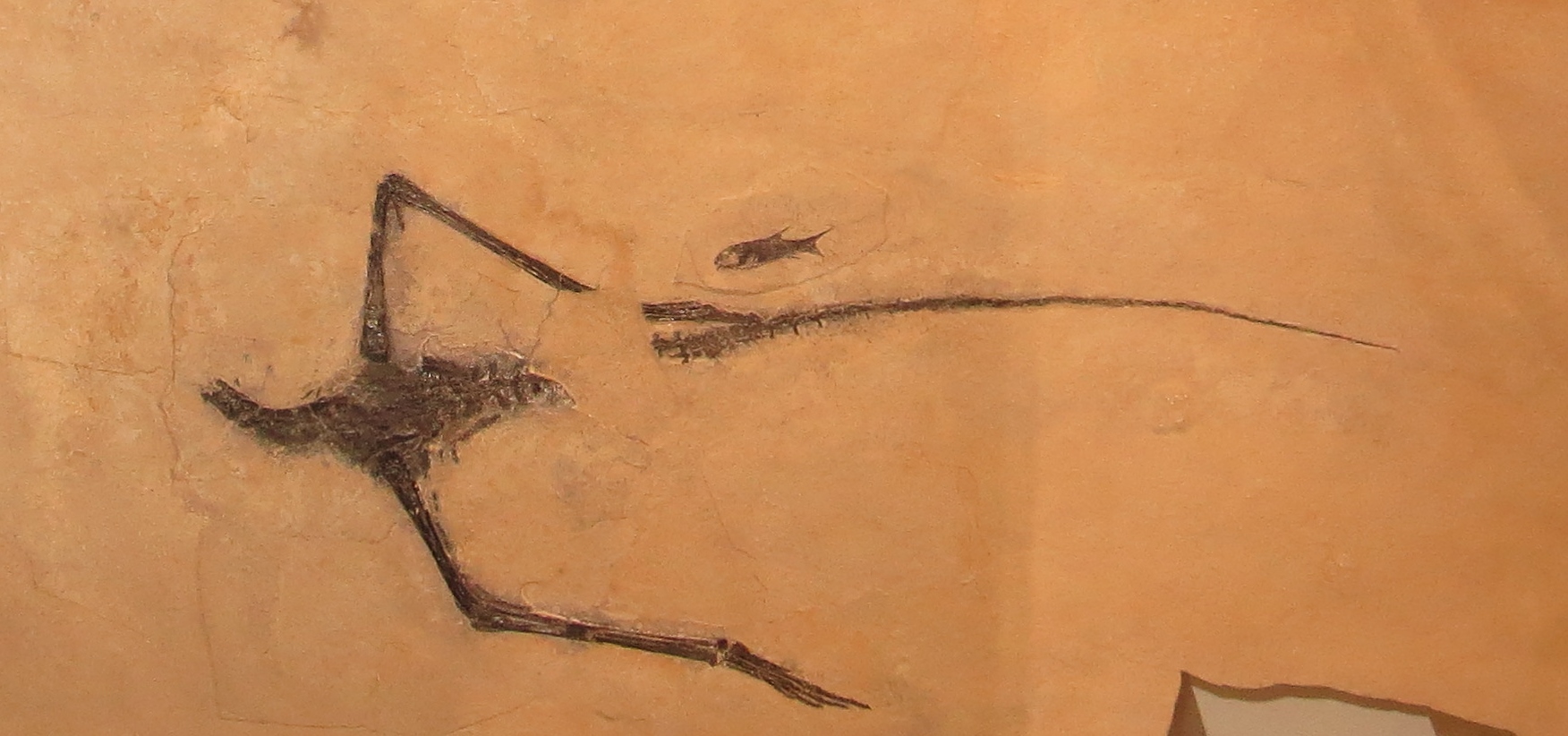Macrocnemus on:
[Wikipedia]
[Google]
[Amazon]
''Macrocnemus'' is an extinct
 ''Macrocnemus'' is known from multiple specimens, most belonging to ''M. bassanii''. ''Macrocnemus'' possessed at least 52 or 53 caudal vertebrae.
Like many other early archosauromorphs, ''Macrocnemus'' had a small and low head on the end of a thin neck containing vertebrae with low neural spines and long cervical ribs. Many archosauromorphs with these features have been grouped within the order
''Macrocnemus'' is known from multiple specimens, most belonging to ''M. bassanii''. ''Macrocnemus'' possessed at least 52 or 53 caudal vertebrae.
Like many other early archosauromorphs, ''Macrocnemus'' had a small and low head on the end of a thin neck containing vertebrae with low neural spines and long cervical ribs. Many archosauromorphs with these features have been grouped within the order
 ''Macrocnemus bassanii'' is the most well-known and numerous species of ''Macrocnemus.'' Although the
''Macrocnemus bassanii'' is the most well-known and numerous species of ''Macrocnemus.'' Although the  Numerous complete or partial specimens of ''M. bassanni'' housed at PIMUZ (Paläontologisches Institut und Museum der
Numerous complete or partial specimens of ''M. bassanni'' housed at PIMUZ (Paläontologisches Institut und Museum der  The smallest specimen of this species is MSNM BES SC111, which is believed to be a juvenile about 30 centimeters long. The largest specimens were about 90 centimeters long.
The smallest specimen of this species is MSNM BES SC111, which is believed to be a juvenile about 30 centimeters long. The largest specimens were about 90 centimeters long.

genus
Genus ( plural genera ) is a taxonomic rank used in the biological classification of living and fossil organisms as well as viruses. In the hierarchy of biological classification, genus comes above species and below family. In binomial nom ...
of archosauromorph
Archosauromorpha ( Greek for "ruling lizard forms") is a clade of diapsid reptiles containing all reptiles more closely related to archosaurs (such as crocodilians and dinosaurs, including birds) rather than lepidosaurs (such as tuataras, l ...
reptile known from the Middle Triassic (Late Anisian
In the geologic timescale, the Anisian is the lower stage or earliest age of the Middle Triassic series or epoch and lasted from million years ago until million years ago. The Anisian Age succeeds the Olenekian Age (part of the Lower Triassic ...
to Ladinian
The Ladinian is a stage and age in the Middle Triassic series or epoch. It spans the time between Ma and ~237 Ma (million years ago). The Ladinian was preceded by the Anisian and succeeded by the Carnian (part of the Upper or Late Triassic ...
) of Europe
Europe is a large peninsula conventionally considered a continent in its own right because of its great physical size and the weight of its history and traditions. Europe is also considered a subcontinent of Eurasia and it is located entirel ...
and China. ''Macrocnemus'' is a member of the Tanystropheidae family
Family (from la, familia) is a group of people related either by consanguinity (by recognized birth) or affinity (by marriage or other relationship). The purpose of the family is to maintain the well-being of its members and of society. Idea ...
and includes three species
In biology, a species is the basic unit of classification and a taxonomic rank of an organism, as well as a unit of biodiversity. A species is often defined as the largest group of organisms in which any two individuals of the appropriate s ...
''. Macrocnemus bassanii'', the first species to be named and described, is known from the Besano Formation and adjacent paleontological sites in the Italian
Italian(s) may refer to:
* Anything of, from, or related to the people of Italy over the centuries
** Italians, an ethnic group or simply a citizen of the Italian Republic or Italian Kingdom
** Italian language, a Romance language
*** Regional Ita ...
and Swiss Alps. ''Macrocnemus fuyuanensis,'' on the other hand, is known from the Falang Formation in southern China. A third species, ''Macrocnemus obristi,'' is known from the Prosanto Formation of Switzerland and is characterized by gracile limbs. The name ''Macrocnemus'' is Greek for "long tibia
The tibia (; ), also known as the shinbone or shankbone, is the larger, stronger, and anterior (frontal) of the two bones in the leg below the knee in vertebrates (the other being the fibula, behind and to the outside of the tibia); it connects ...
".
Description
 ''Macrocnemus'' is known from multiple specimens, most belonging to ''M. bassanii''. ''Macrocnemus'' possessed at least 52 or 53 caudal vertebrae.
Like many other early archosauromorphs, ''Macrocnemus'' had a small and low head on the end of a thin neck containing vertebrae with low neural spines and long cervical ribs. Many archosauromorphs with these features have been grouped within the order
''Macrocnemus'' is known from multiple specimens, most belonging to ''M. bassanii''. ''Macrocnemus'' possessed at least 52 or 53 caudal vertebrae.
Like many other early archosauromorphs, ''Macrocnemus'' had a small and low head on the end of a thin neck containing vertebrae with low neural spines and long cervical ribs. Many archosauromorphs with these features have been grouped within the order Protorosauria
Protorosauria is an extinct polyphyletic group of archosauromorph reptiles from the latest Middle Permian ( Capitanian stage) to the end of the Late Triassic (Rhaetian stage) of Asia, Europe and North America. It was named by the English anatom ...
, although it is debatable whether this order is valid. Features that are common to most "protorosaurs" like ''Macrocnemus'' include the ankle having a hooked fifth metatarsal attached to elongated limb elements, with tarsal elements with well-ossified proximal and distal ends. Unlike in ''Tanystropheus
''Tanystropheus'' (Greek ~ 'long' + 'hinged') is an extinct archosauromorph reptile from the Middle and Late Triassic epochs. It is recognisable by its extremely elongated neck, which measured long—longer than its body and tail combined. T ...
,'' digit V of the proximal phalanx of ''Macrocnemus'' is shorter than the other digits.
Species
''M. bassanii''
 ''Macrocnemus bassanii'' is the most well-known and numerous species of ''Macrocnemus.'' Although the
''Macrocnemus bassanii'' is the most well-known and numerous species of ''Macrocnemus.'' Although the holotype
A holotype is a single physical example (or illustration) of an organism, known to have been used when the species (or lower-ranked taxon) was formally described. It is either the single such physical example (or illustration) or one of sever ...
specimen of this species was destroyed during World War II
World War II or the Second World War, often abbreviated as WWII or WW2, was a world war that lasted from 1939 to 1945. It involved the vast majority of the world's countries—including all of the great powers—forming two opposing ...
, a cast of the specimen ( MSNM 14624, or alternatively PIMUZ T 2473) survived.
 Numerous complete or partial specimens of ''M. bassanni'' housed at PIMUZ (Paläontologisches Institut und Museum der
Numerous complete or partial specimens of ''M. bassanni'' housed at PIMUZ (Paläontologisches Institut und Museum der Universität Zürich
The University of Zürich (UZH, german: Universität Zürich) is a public research university located in the city of Zürich, Switzerland. It is the largest university in Switzerland, with its 28,000 enrolled students. It was founded in 1833 f ...
) include A III/208, T 1534, T 2470, T 2472, T 2474 through T 2477, T 2809, T 2812 through T 2816, T 4822, and T 4355.
''M. fuyuanensis''
''Macrocnemus fuyuanensis'' was discovered at the Yunnan Province, southwestern China from the marine of the Triassic. More specially, it is known from the Zhugnapo Member of the Falang Formation. This species in known from two nearly complete specimens, IVPP V15001 (the holotype specimen) and GMPKU-P-3001. The main features that set this species apart from ''M. bassanii'' include the presence of 17 or 18 dorsal vertebrae, a humerus which is longer than the radius, and a femur which is longer than the tibia. The front of the skull also differs compared to ''M. bassanii''. According to Olivier Riepple ''et al'', “a large, plate-like lacrimal is located in front of the tall, columnar prefrontal that defines the anterior margin of the orbit. A longitudinally oriented nasal groove extends along the anterior two-thirds of the snout, accommodating the external naris at its anterior part”. This species is also larger than ''M. bassanii''. In 2017, a new specimen of ''Macrocnemus'' from the Besano Formation was described. This specimen, PIMUZ T 1559, possessed a long humerus, similar to that of ''M. fuyuanensis''. It also differed from M. bassanii in the construction of its interclavicle. However, the interclavicles of the Chinese specimens are difficult to observe, and thus it is uncertain whether this European specimen is truly a member of ''M. fuyuanensis''. Its describers placed it as "''Macrocnemus'' aff. ''M. fuyuanensis''", indicating its close relations to this species.
''M. obristi''
''Macrocnemus obristi'' was discovered by Christian Obrist during an excavation from the Upper Prosanto Formation, which is dated to the middle Triassic. It is known from two specimens, PIMUZ A/III 1467 (the holotype, consisting of a complete articulated tail, legs, and pelvic region) and PIMUZ A/III 722 (an isolated right tarsus). It is noticeably characterized by its gracile limb elements (including slender metatarsals) and a tibia which is 20% longer than the femur. Preserved soft tissue has also been found in the pelvic girdle of ''M. obristi's'' holotype.Paleoecology
Some features of the limbs imply that ''Macrocnemus'' lived in terrestrial habitats and was capable of rapid bipedal movement. ''Macrocnemus'' and ''Tanystropheus'' are among the most common "protorosaur" genera found in middle Triassic marine sediments. The presence of both ''Macrocnemus'' and ''Tanystropheus'' in both Switzerland and southwestern China suggest that the fauna of the western and eastern Tethyan realms was similar during the Middle and early Late Triassic.Classification
In 1970 Romer classified ''Macrocnemus'' as a lepidosaur related to modern lizards andtuatara
Tuatara (''Sphenodon punctatus'') are reptiles endemic to New Zealand. Despite their close resemblance to lizards, they are part of a distinct lineage, the order Rhynchocephalia. The name ''tuatara'' is derived from the Māori language and m ...
s, but in 1988 Carroll reclassified it as a member of Protorosauria. Other "protorosaurs" include ''Protorosaurus
''Protorosaurus'' ("first lizard") is a genus of lizard-like early reptiles. Members of the genus lived during the late Permian period in what is now Germany and Great Britain. Once believed to have been an ancestor to lizards, ''Protorosaurus'' ...
'' and ''Tanystropheus''. Protorosaurs may not form a valid monophyletic clade according to some studies, which place tanystropheids as more derived archosauromorphs than other "protorosaurs". ''Macrocnemus'' is believed to be an early member of the tanystropheid family, as it shares many small skeletal features with ''Tanystropheus'' yet lacks the very elongated neck of that genus and other derived tanystropheids.
References
{{Taxonbar, from=Q1525485 Tanystropheids Prehistoric reptile genera Middle Triassic reptiles of Asia Middle Triassic reptiles of Europe Anisian genus first appearances Ladinian genus extinctions Fossil taxa described in 1931